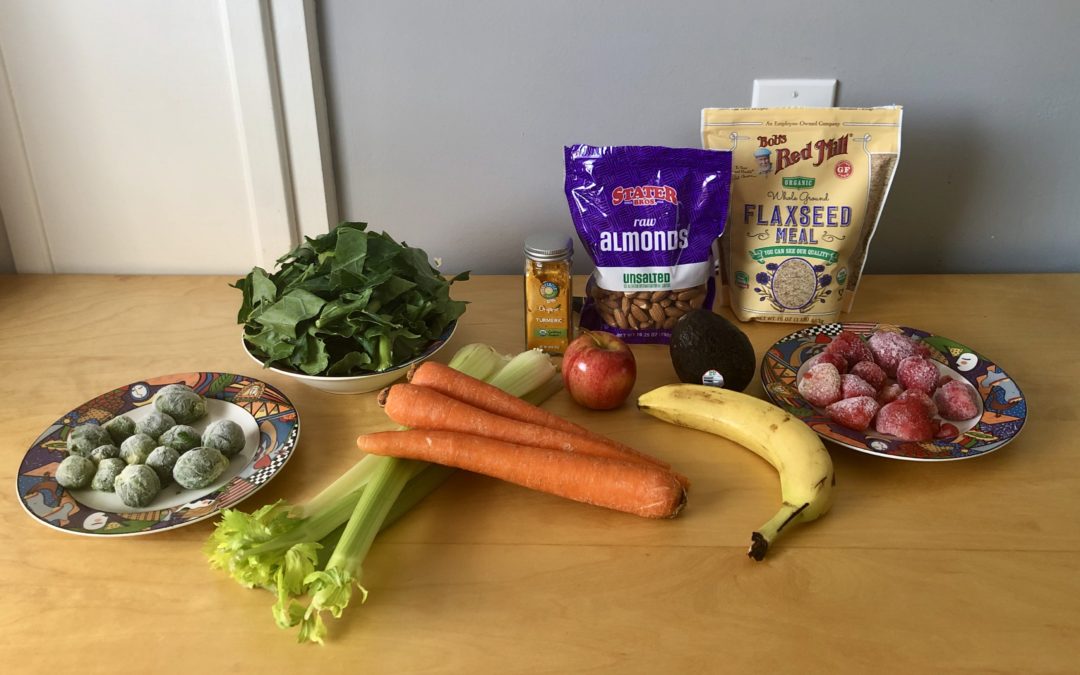Nutritional
The obvious benefit was my ability to consume way more fruits and vegetables. I began slowly but after a few months I was regularly blending 4 servings of fruit and 5 servings of vegetables every day!
I think smoothies are superior to juicing because I’m actually eating the whole fruit or vegetable. I’m sure some will say that blending loses nutrition or whatever but this is WAY better than what I was doing before smoothies.
Plus I was able to easily add in other “bonus health foods.” For example, I discovered that sauerkraut can be good for your gut biome so I began adding a serving size of sauerkraut to my smoothies. I know, it sounds gross but it’s undetectable in the overall concoction.

Time Savings
Cost Savings
-
Leafy Greens: 97¢
-
Carrots: 29¢
-
Celery: 62¢
-
Banana: 20¢
-
Avocado: $1.25
-
Apple: 55¢
-
Brussel Sprouts: 32¢
-
Frozen Strawberries: 58¢
-
Almonds: 48¢
-
Turmeric: 7¢
-
Flaxseed: 12¢
-
Vitamix: $450 / 10 years / 208 uses per year = 22¢/use
-
Total: $5.67 per smoothie
Easy to Consume
What to put in a Smoothie
-
3 servings of fruits
-
Typically a banana, apple, avocado, or a pear.
-
2 servings vegetables
-
Typically carrots, celery, tomatoes, cucumber, beets, or zucchini.
-
2 servings of leafy greens
-
Typically kale, spinach, or chard.
-
1 serving of berries
-
Typically blueberries, strawberries, or raspberries.
-
1 serving cruciferous vegetable
-
Typically broccoli, cauliflower, or Brussel sprouts.
-
1 tbsp ground Flaxseed
-
1 serving of nuts
-
Typically almonds, chia seeds, Brazil nuts, sunflower seeds, or pumpkin seeds.
-
1/4 tsp turmeric
-
3-4 cups of water
What Blender to use
– Travis
P.S. I also host a podcast called Curiosityness! Every week I conduct a podcast interview with an expert about the most fascinating history, things, & people of our world. If that interests you, I encourage you to check out the Curiosityness podcast available for free at https://curiosityness.com/#listen
And find me on Instagram @travderose: https://www.instagram.com/travderose/







